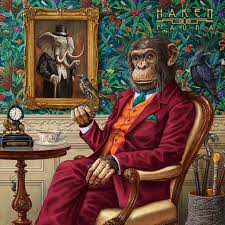Stamp: Greem Snake (Philodryas aestiva) (Uruguay 2015)
Greem Snake (Philodryas aestiva) (Uruguay 2015)
05 June (Uruguay ) within release Wetlands for Our future goes into circulation Stamp Greem Snake (Philodryas aestiva) face value 15 Uruguayan peso
| Stamp Greem Snake (Philodryas aestiva) in catalogues | |
|---|---|
| WADP Numbering System - WNS: | WAD:UY024.15 |
Stamp is horizontal format.
Also in the issue Wetlands for Our future:
- Stamp - Scarlet-headed Blackbird (Amblyramphus holosericeus) face value 15;
- Stamp - Black Skimmer (Rynchops niger intercedens) face value 15;
- Stamp - Chilean Flamingo (Phoenicopterus chilensis) face value 15;
- Stamp - Snowy Egret (Egretta thula) face value 15;
- Stamp - Plumbeous Ibis (Theristicus caerulescens) face value 15;
- Stamp - Capybara (Hydrochoerus hydrochaeris) face value 15;
- Stamp - Saffron-cowled Blackbird (Xanthopsar flavus) face value 15;
- Stamp - Greem Snake (Philodryas aestiva) face value 15;
- Stamp - Neohelice crab (Neohelice granulata) face value 15;
- Stamp - Melanophryniscus montevidensis face value 15;
- Mini Sheet - Wetlands for Our future face value ;
- Stamp - Scarlet-headed Blackbird (Amblyramphus holosericeus) face value 15;
- Stamp - Black Skimmer (Rynchops niger intercedens) face value 15;
- Stamp - Chilean Flamingo (Phoenicopterus chilensis) face value 15;
- Stamp - Snowy Egret (Egretta thula) face value 15;
- Stamp - Plumbeous Ibis (Theristicus caerulescens) face value 15;
- Stamp - Capybara (Hydrochoerus hydrochaeris) face value 15;
- Stamp - Saffron-cowled Blackbird (Xanthopsar flavus) face value 15;
- Stamp - Common Green Racer (Phylodryas aestiva) face value 15;
- Stamp - Grapsid Crab (Neohelice granulatus) face value 15;
- Stamp - Montevideo Red-belly Toad (Melanophryniscus montevidensis) face value 15;
- Souvenir Sheet - Issued In A Sheet Forming Composite Design face value 10*15;
|
Data entry completed
80%
|
|
|---|---|
| Stamp Greem Snake (Philodryas aestiva) in digits | |
| Country: | Uruguay |
| Date: | 2015-06-05 |
| Size: | 41 x 30 |
| Perforation: | 13 by 13 |
| Format: | Stamp |
| Face Value: | 15 Uruguayan peso |
Stamp Greem Snake (Philodryas aestiva) it reflects the thematic directions:
Fauna (pl.: faunae or faunas) is all of the animal life present in a particular region or time. The corresponding terms for plants and fungi are flora and funga, respectively. Flora, fauna, funga and other forms of life are collectively referred to as biota. Zoologists and paleontologists use fauna to refer to a typical collection of animals found in a specific time or place, e.g. the "Sonoran Desert fauna" or the "Burgess Shale fauna". Paleontologists sometimes refer to a sequence of faunal stages, which is a series of rocks all containing similar fossils. The study of animals of a particular region is called faunistics.
Reptiles are tetrapod (four-limbed vertebrate) animals in the class Reptilia, comprising today's turtles, crocodilians, snakes, amphisbaenians, lizards, tuatara, and their extinct relatives. The study of these traditional reptile orders, historically combined with that of modern amphibians, is called herpetology. Because some reptiles are more closely related to birds than they are to other reptiles (e.g., crocodiles are more closely related to birds than they are to lizards), the traditional groups of "reptiles" listed above do not together constitute a monophyletic grouping (or clade). For this reason, many modern scientists prefer to consider the birds part of Reptilia as well, thereby making Reptilia a monophyletic class.


